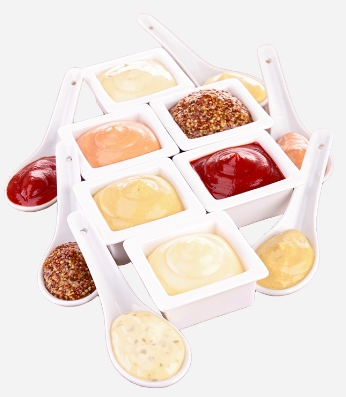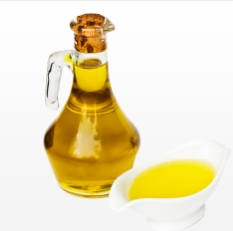Liquid Ingredients
Ingredients play a key role in the development of food, with unique flavors and textures and as importantly, influencing the color of the final food product. Major brands around the world understand the importance of ensuring appealing food color as this closely relates to a consumers perception of flavor. That is why companies like McCormick, Smuckers, ConAgra Foods and other major world-wide brands rely HunterLab's 60 + years of experience and knowledge in providing solutions to ensure color consistency of their food ingredients throughout their supply chain.
Liquid or 'wet' ingredients can include sugars, such as corn syrup, honey, molasses or maple syrup, extracts such as Vanilla extract and other liquid flavorings, and oils such as canola oil or vegetable oil to name a few. Liquid ingredients can be opaque, translucent or transparent, and so require different measurement instrumentation and techniques for successful color measurement.
Opaque Liquids are impenetrable by light and are best measured using a Directional 45/0° reflectance instrument. This is the geometry that most closely matches how the human eye 'sees' color.
Translucent Liquids allow light to pass through, but only diffusely, so that objects on the other side cannot be clearly distinguished. Both reflective and transmittance measurement modes may work well depending on the translucency of the sample. As a rule of thumb,
-
If at the path length that your customer will view the sample, you can see slight details of your thumb or finger through the liquid, then transmittance is the preferred measurement method.
-
If you cannot see slight details, then reflectance measurement using directional 45°/0° is preferred, though it is also possible to use diffuse d/8° sphere geometry.
Path length is defined as the thickness of the sample from where the light enters to where it exits the sample. A simple test to determine the translucency is to pour the liquid into a clear container that simulates the thickness that the sample will normally be viewed, and hold your thumb on the back of the container and look through the sample.
Transparent Liquids allow light to pass through with little or no interruption or distortion so that objects on the other side can be clearly seen. These liquids can only be measured using transmission instrumentation.
High Solid - Liquid Ingredients
Ingredients play a key role in the development of food, with unique flavors and textures and as importantly, influencing the color of the final food product. Major brands around the world understand the importance of ensuring appealing food color as this closely relates to a consumers perception of flavor. That is why companies like McCormick, Smuckers, ConAgra Foods and other major world-wide brands rely HunterLab's 60 + years of experience and knowledge in providing solutions to ensure color consistency of their food ingredients throughout their supply chain.
High solids liquid ingredients are typically opaque or near opaque in nature due to their high content of suspended solids. Hi solids liquid ingredients can benefit from either directional or transmittance color measurements, depending on the opaqueness or translucency of the sample:
Opaque Liquids are impenetrable by light; neither transparent nor translucent, and are best measured using a Directional 45°/0° reflectance instrument. This is the geometry that most closely matches how the human eye 'sees' color.
Translucent Liquids allow light to pass through, but only diffusely, so that objects on the other side cannot be clearly distinguished. Both reflective and transmittance measurement modes may work well depending on the translucency of the sample. A rule of thumb is;
-
- If at the path length that your customer will view the sample, you can see slight details of your thumb or finger through the liquid, then transmittance is the preferred measurement method.
-
- If you cannot see slight details, then reflectance measurement using directional 45°/0° is preferred, though it is also possible to use diffuse d/8° sphere geometry.
-
- Path length is defined as the thickness of the sample from where the light enters to where it exits the sample. A simple test to determine the translucency is to pour the liquid into a clear container that simulates the thickness that the sample will normally be viewed, and hold your thumb on the back of the container and look through the sample.
-
Low Solids - Liquid Ingredients
Ingredients play a key role in the development of food, with unique flavors and textures and as importantly, influencing the color of the final food product. Major brands around the world understand the importance of ensuring appealing food color as this closely relates to a consumers perception of flavor. That is why companies like McCormick, Smuckers, ConAgra Foods and other major world-wide brands rely HunterLab's 60 + years of experience and knowledge in providing solutions to ensure color consistency of their food ingredients throughout their supply chain.
Low solids liquid ingredients are typically highly translucent to transparent in nature allowing light to pass through with little or no interruption or distortion so that objects on the other side can be clearly seen. These liquids can only be measured using transmission instrumentation.






